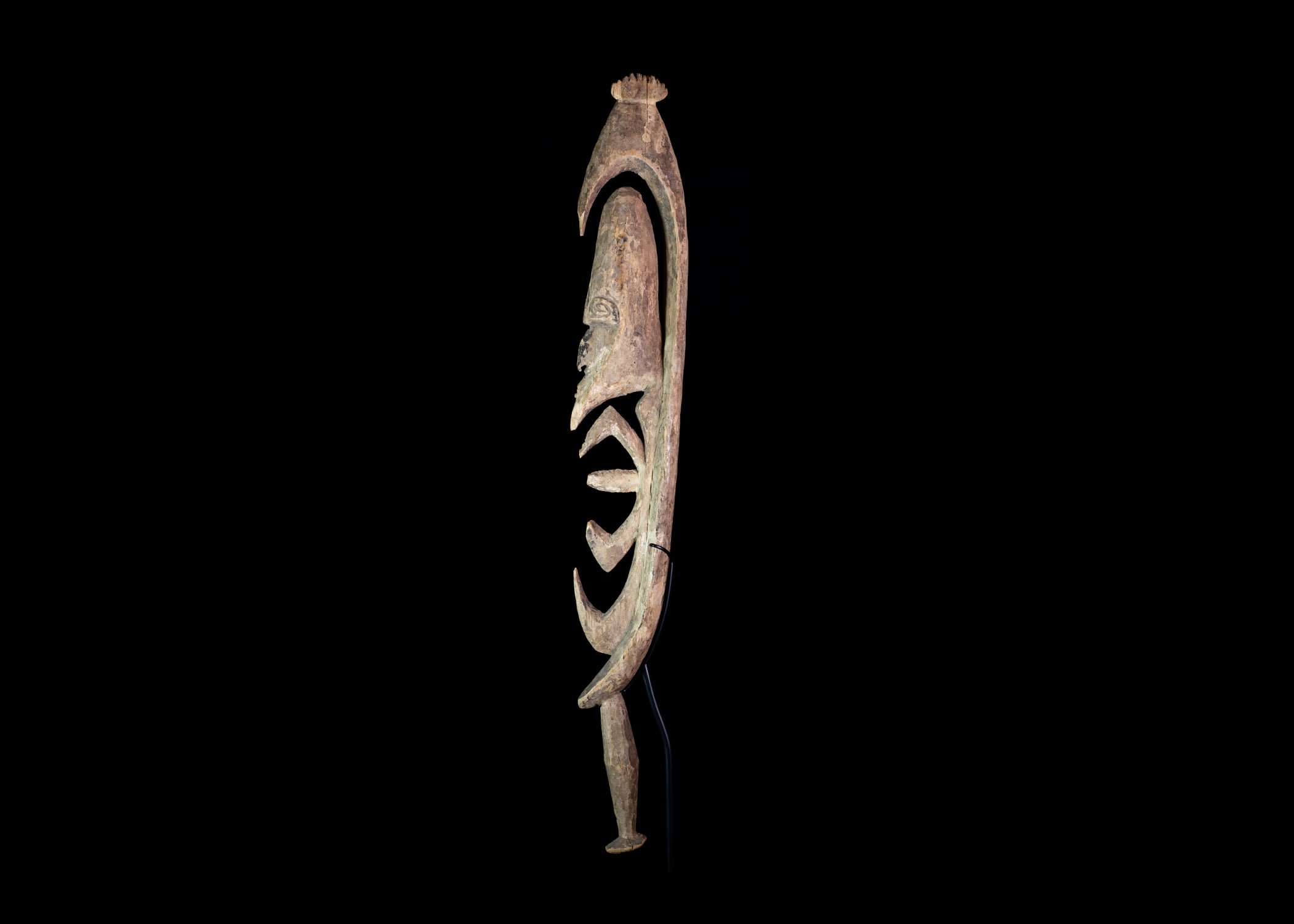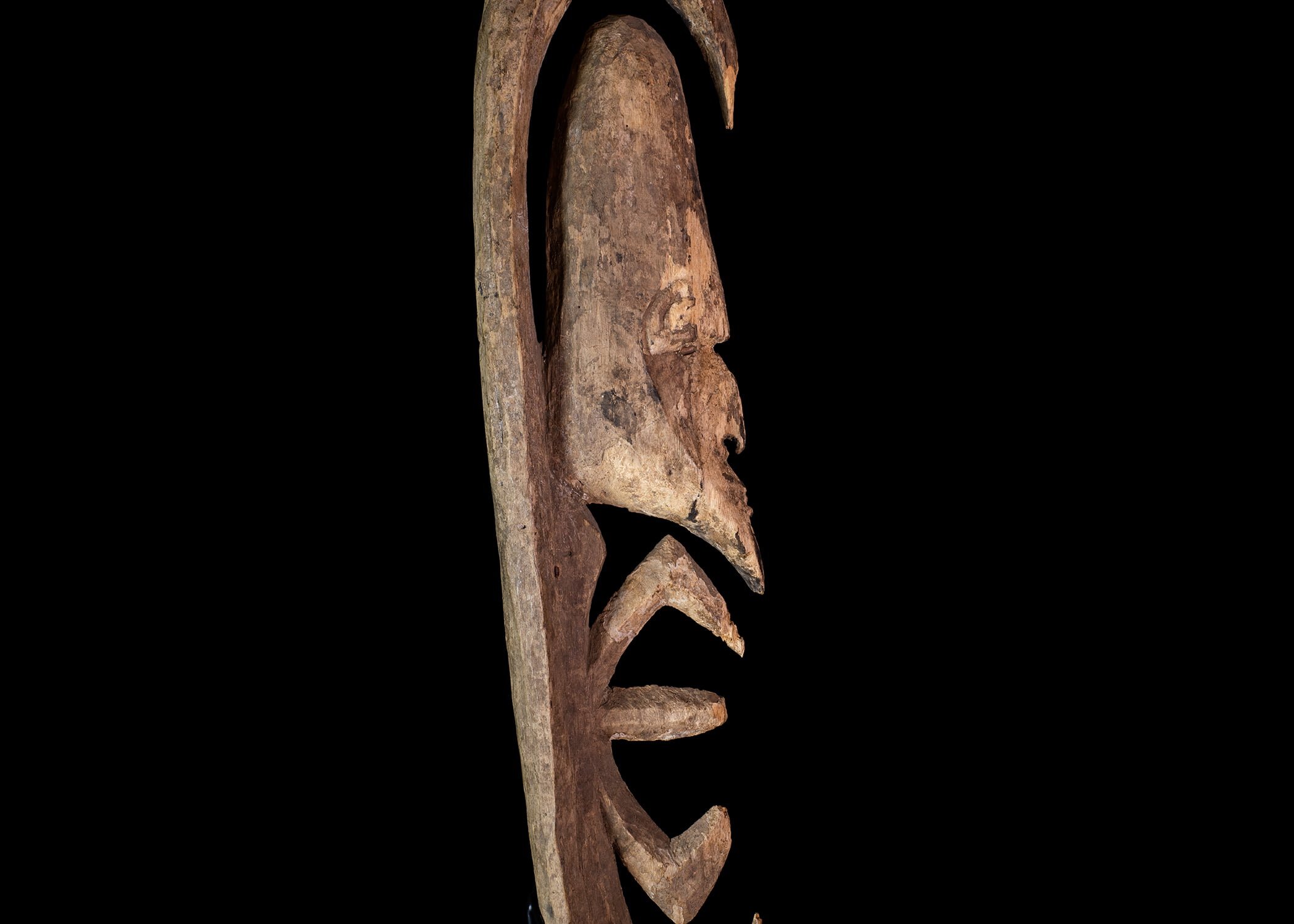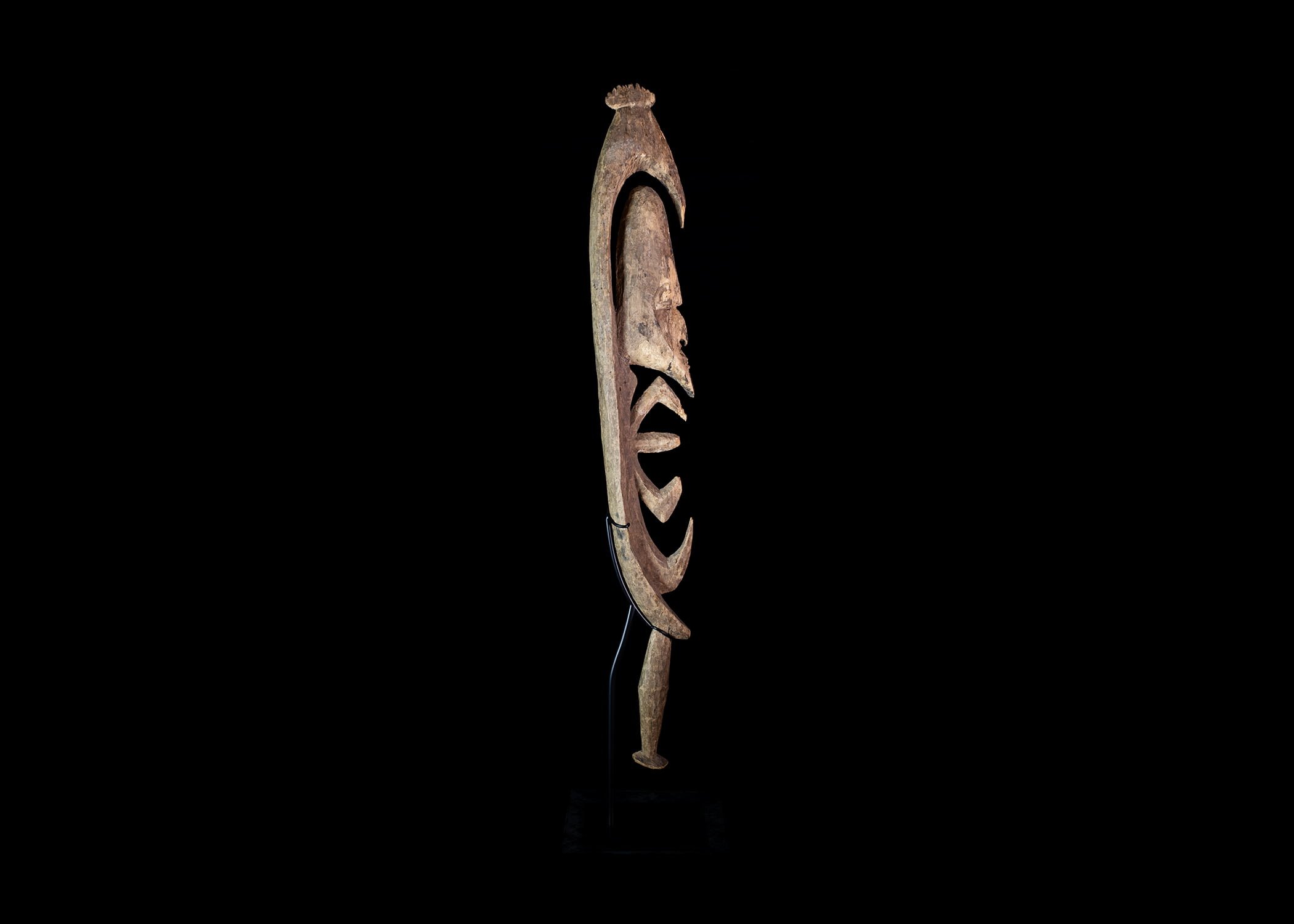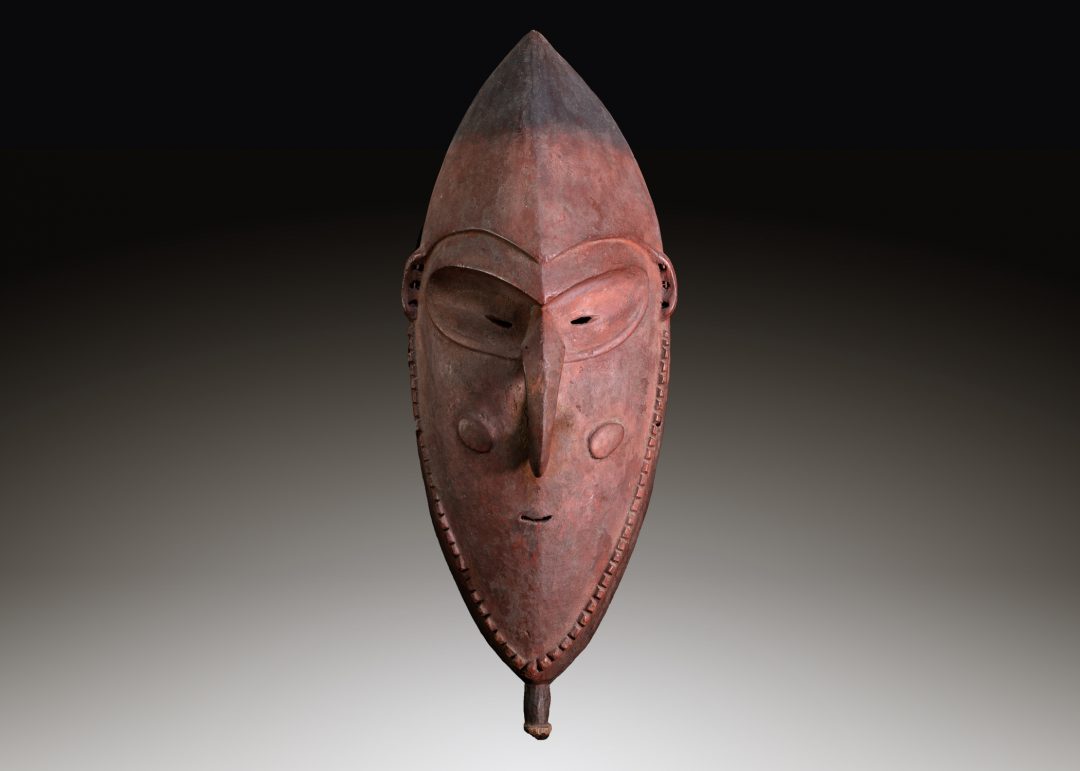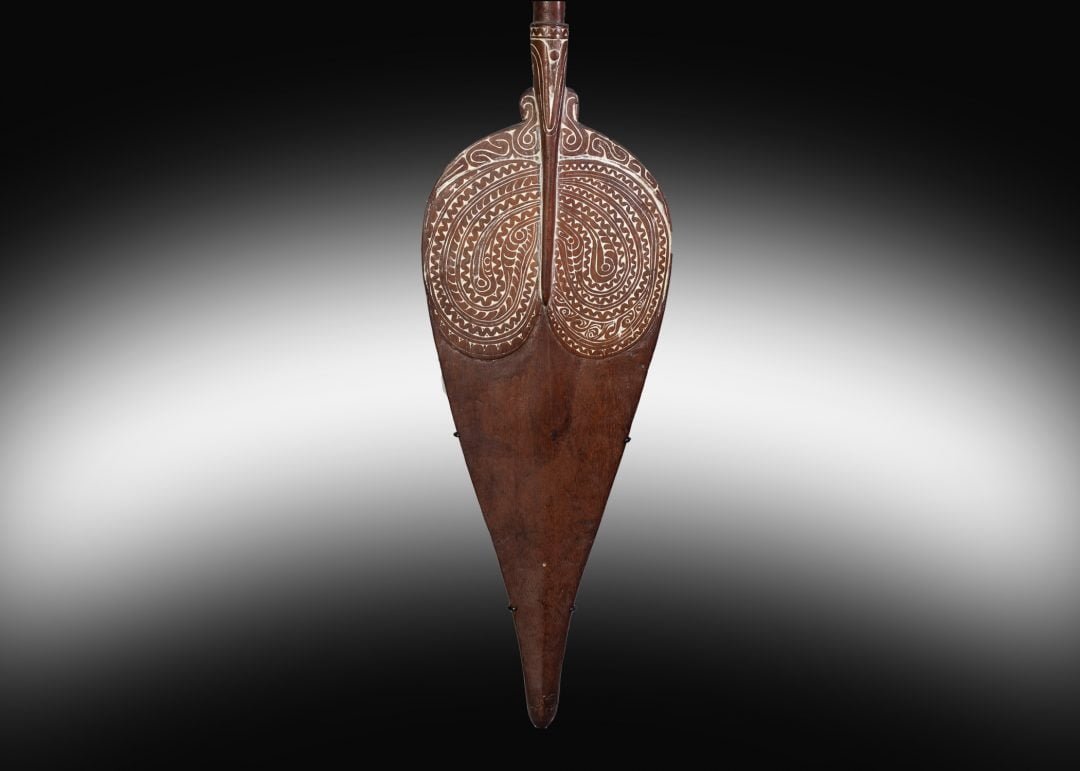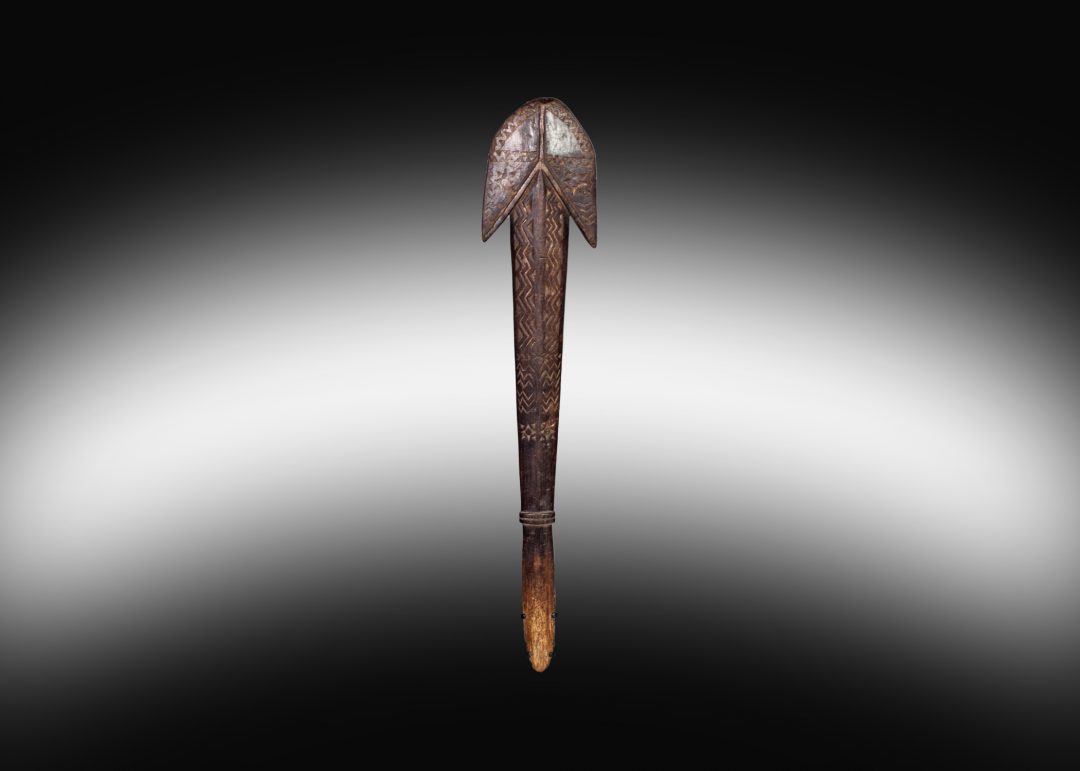Early Yipwon Figure
-
TitleEarly Yipwon Figure
-
LocationKorewori River, East Sepik Province
-
DateMid 20th Century
- Size115cm (L) x 18cm (W)
-
Price$4,600.00
This early Yipwon figure shows significant signs of age and wear has an imposing presence. It is displayed on a custom made metal stand
The Met Museum has recorded the following documentation that accompanies a similar example.
“Throughout the ranges of hills south of the middle Sepik River in northeast Papua New Guinea, a number of peoples worked in what is known as the opposed-hooks style, in which curved and pointed hooks are arranged on a vertical axis around a central design element. Among the most elegant are the remarkable stylized anthropomorphic hook figures of the Alamblak people that are known as yipwon. Local oral tradition describes the origin of these distinctive images. When the spirit of the Sun, who formerly inhabited the earth, was carving the first slit gong (a large musical instrument), the pieces of wood chipped from the carving came to life as spirits who lived with the Sun in the men’s ceremonial house. One day these spirits killed one of the Sun’s male relatives and drank his blood, after which they stretched themselves out against the wall of the house and turned back into wood. Angered by their act, the Sun ascended into the sky while the yipwon remained on earth as patron spirits of warfare and hunting. Large yipwon images such as this one were owned collectively by clans, while smaller portable examples were individually owned and served as amulets, carried in net bags by their owners to bring success in hunting and battle.”
This early Yipwon figure shows significant signs of age and wear has an imposing presence. It is displayed on a custom made metal stand
The Met Museum has recorded the following documentation that accompanies a similar example.
“Throughout the ranges of hills south of the middle Sepik River in northeast Papua New Guinea, a number of peoples worked in what is known as the opposed-hooks style, in which curved and pointed hooks are arranged on a vertical axis around a central design element. Among the most elegant are the remarkable stylized anthropomorphic hook figures of the Alamblak people that are known as yipwon. Local oral tradition describes the origin of these distinctive images. When the spirit of the Sun, who formerly inhabited the earth, was carving the first slit gong (a large musical instrument), the pieces of wood chipped from the carving came to life as spirits who lived with the Sun in the men’s ceremonial house. One day these spirits killed one of the Sun’s male relatives and drank his blood, after which they stretched themselves out against the wall of the house and turned back into wood. Angered by their act, the Sun ascended into the sky while the yipwon remained on earth as patron spirits of warfare and hunting. Large yipwon images such as this one were owned collectively by clans, while smaller portable examples were individually owned and served as amulets, carried in net bags by their owners to bring success in hunting and battle.”
